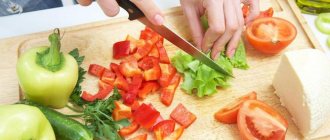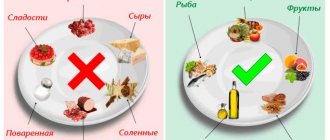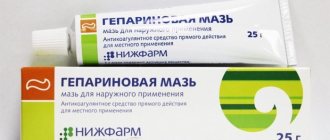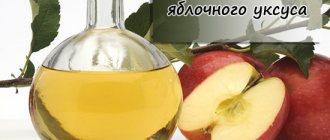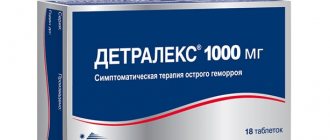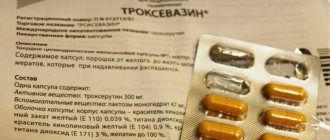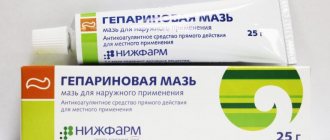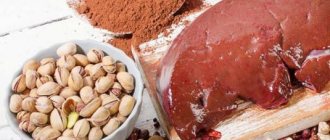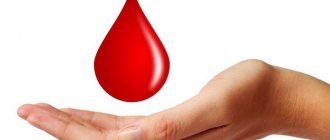Anal fissures local manifestation
Acute and chronic inflammatory processes disrupt the life processes of cells and reduce the so-called cellular immunity, which helps the body independently cope with local manifestations of acute inflammation. Such dystrophic conditions are only the tip of the iceberg, and therefore cannot be treated without eliminating the causes of their occurrence. A restorative diet is indicated not only for anal fissure, but also for polyps and erosive manifestations.
Most of the human immune functions are concentrated in the intestines. Up to 80% of immunocompetent cells are concentrated directly in the mucosa, and 25% of them are immunologically active tissue, where about 1000 lymphocytes are concentrated in each meter. The organs of “macroimmunity” include the liver, which acts as a filter, as well as the spleen, where the bulk of immune cells are formed.
The epithelium of all organs of the gastrointestinal tract delimits tissues from many substances with a foreign genetic structure; both the rapid elimination of local infections and the body’s overall immunity depend on its normal state.
Unfortunately, no medicine can provide immediate treatment for gastrointestinal lesions; this is only possible with a systematic approach and creating a favorable environment for recovery.
In other words, the most inexpensive and effective treatment for many pathological manifestations in the gastrointestinal tract is a proper diet, which, of course, does not exclude targeted treatment or suppression of various infections. Thanks to the diet, immunity and vital activity of the intestinal microflora are restored, as a result, chronic processes are eliminated and epithelial tissue is restored and the developing cellular destruction stops.
How to eat during an exacerbation
When the pathology worsens, the main task is to normalize the patient’s condition and make the stool consistency soft. Therefore, on the first day of exacerbation of hemorrhoids, food is completely abandoned.
On the second day, the following dishes are allowed:
- a small portion of well-boiled barley or oatmeal;
- buckwheat boiled in water;
- glass of low-fat sourdough
- vegetable soup.
They eat small portions 4-5 times a day. This regime is observed for three days. On the fourth day the following is added to the diet:
- low-fat yogurt;
- apple;
- carrots and beets;
- boiled fish;
- steamed chicken breast.
In acute forms of pathology, all foods are steamed or boiled. Baked dishes are not advisable during this period.
Causes
Gastrointestinal diseases only in 70% of cases cause the appearance of chronic fissures in the anus; in some cases they can appear for physiological reasons and as a result of trauma, after surgery as a result of excision of hemorrhoids. The anal area has an anatomical predisposition to the formation of cracks on the side adjacent to the vagina.
In men, cracks may occur in the area of contact with the prostate. Thus, not only the gastrointestinal tract organs influence the causes of rupture of anal tissue, but also “reproductive” inflammation. Treatment of these organs can also give a positive result, promoting rapid healing of the crack.
During pregnancy
Expectant mothers often suffer from hemorrhoids, especially in the second and third trimesters. The disease can appear immediately after childbirth due to the high load on the vascular system when the baby passes through the birth canal.
To improve bowel function, you need to adhere to proper nutrition.
Women need to remove some foods from their diet:
- rich broths;
- heavy protein foods;
- salted, smoked, spicy;
- sweet, buttery;
- whole milk.
The menu for hemorrhoids in expectant mothers should include:
- porridge with water;
- fermented milk drinks;
- vegetable stew;
- dark bread;
- vegetable soups;
- dried fruits;
- unrefined vegetable oil.
Food should only be freshly prepared, it should be eaten slowly, chewing thoroughly.
Diet principles
Considering all of the above, the diet as part of the complex treatment of anal fissures should contribute to the following processes:
- exclude mechanical damage to the affected area; accordingly, you should not eat rough food that has an irritating effect (chemical and mechanical);
- contain components that form a kind of “artificial” immunity at the time of its decline;
- create conditions for self-cleaning of the liver and bile, small and large intestines and restore microflora;
- include biologically active ingredients that promote restoration of cellular structure (cell membranes) and wound healing.
Simultaneously with the start of dietary treatment, it is advisable to carry out antibacterial, antiviral and antiparasitic treatment of the gastrointestinal tract, even with a normal clinical picture. It is recommended to complete it with a course of the drug Galavit, which has a good effect on tissue restoration.
How to eat during the postoperative period
Diet is important not only at the time of therapy, but after surgery. This approach is the best preventive measure for bleeding and suture dehiscence. Those patients who eat correctly observe positive dynamics:
- pain disappears;
- normal bowel movement;
- you feel comfortable.
Important: It is recommended to eat a balanced diet. Remember, even eating lean meat products without porridge contributes to constipation. Moreover, if you add durum pasta or boiled potatoes as a side dish to meat products, the problem will only worsen.
For the postoperative period, as well as during therapy, it is recommended to completely exclude foods that promote swelling of veins and blood vessels. Such tactics will help improve intestinal motility, reduce gas formation and neutralize irritation of the mucous membrane with feces.
On the first day after the operation, do not eat food. But you need to drink a lot. On the second day, the patient is allowed to eat small amounts and liquid food. Food is steamed, boiled or stewed.
As for fried foods, they are completely excluded until the patient has fully recovered. And after recovery, it is not recommended to get too carried away with eating such dishes.
Fermented milk and enzyme products
For anal fissure, fermented milk diets are often used, however, this is a one-sided approach to the issue of restoring the microflora. Biokefir is not able to significantly affect developed dysbiosis; to eliminate it, it is necessary to take products or drugs with a high content of lactobacilli. Therefore, along with nutrition and consumption of fermented milk products, it is recommended to drink Hilak, Canadian yogurt, Enterozermin, or, without drugs, use Evita starter culture to prepare live lactic acid products and eat them daily.
Oatmeal jelly has long been used to restore intestinal microflora and epithelium. The advantage of this product is that with its help, easily digestible proteins are introduced into the diet, as well as vitamins, starch, fats, minerals and a large number of amino acids. Oatmeal jelly contains a significant amount of lactic acid bacteria. This is an excellent remedy for the treatment of pancreas - pancreatitis.
Oatmeal jelly recipe:
- Mix 300 g of oat flour with 4 tbsp. l. oatmeal and 1/3 tbsp. fresh unpasteurized kefir (preferably homemade);
- pour into a 3-liter jar and fill with well warm water after boiling;
- put in a warm place for 2-3 days;
- pass the oat mass through a sieve, pour it into boiling water and bring to a jelly-like state, quickly remove from heat without bringing to a boil;
- cool, then you can add sugar, salt, honey, nuts and dried fruits.
Oatmeal jelly can be stored in the refrigerator for at least a month. Should be taken half an hour before meals or with meals.
Diet for chronic constipation and hemorrhoids
Before starting a proper therapeutic diet, you should discuss the issue of colon cleansing with your doctor. A similar procedure can be performed either with the help of laxatives (which is not always desirable) or laxative products.
Therapeutic fasting is a fairly serious process that must be carried out extremely carefully and thoughtfully. Therefore, fasting on your own, without first consulting a doctor, is strictly not recommended.
We need a diet that will take into account all the individual characteristics of the patient.
However, there are general principles of nutrition during the chronic course of hemorrhoidal disease:
- for the purpose of preliminary cleansing of the intestines, you can consume unsaturated broths (vegetable or meat) and fresh juices for one or two days;
- then you need to introduce porridges into the menu that normalize the digestive process (buckwheat, Hercules, pearl barley, barley);
- You should eat vegetables, sweet fruits and dried fruits every day;
- to improve the functioning of the digestive system and facilitate the act of defecation, experts recommend introducing bran into the diet;
- If possible, you should reduce your salt intake, since this seasoning in large quantities leads to dilation of blood vessels;
- a diet for hemorrhoids with blood involves strict consideration of various seasonings, protein products (meat and fish);
- in the evening it is recommended to drink one-day kefir or other “sour milk”. You can also make kefir-vegetable cocktails with cucumbers or celery.
Diet therapy, however, like the treatment of hemorrhoids with the help of medications, must be agreed with a specialist - a proctologist.
Diet soups
If you have an anal fissure, it is better to limit yourself to light vegetable foods low in animal protein. This will contribute not only to the normalization of the activity of lactic acid bacteria along the entire length of the intestine, but also to the natural cleansing of the liver.
One of the miraculous remedies is the Mayon diet, which was developed by professional nutritionists for weight loss while simultaneously restoring the body. Its basis is low-calorie vegetable soup. To achieve the effect of a gentle cleansing of the liver and restore the functionality of the gastrointestinal tract, you should not consume flour, alcohol, smoked fried foods - foods that contribute to the development of lactose-negative flora. Mayon soup also relieves swelling, promotes the elimination of toxins, the breakdown of fats, and normalizes intestinal motility and stool.
The soup is prepared from celery root, white cabbage (you can replace any of your choice), 5 onions, 3 bell peppers, 4 celery stalks and fresh herbs. Finely chopped vegetables are cooked after boiling for about 10 minutes, add herbs and a tablespoon of good olive, flaxseed or hemp oil to the finished soup. You can additionally use pumpkin, zucchini, carrots, spinach or asparagus.
What should you eat if you have hemorrhoids?
The diet plan for anal varicose veins should include a certain set of products that will not only not harm enlarged hemorrhoids, but will also significantly speed up the healing process.
The diet for hemorrhoids in women and men is largely the same and includes a similar list of products that have laxative or strengthening effects, improve intestinal motility or, on the contrary, slow down its work.
Table of permitted and prohibited products
| "Permitted" list of products | "Prohibited" list of products |
| Kefir, bifidok, natural yogurt | Fatty meats |
| Pearl barley, buckwheat and oatmeal | Pasta |
| Sweet fruits (apples, bananas, plums, etc.) | Rice and semolina porridge |
| Vegetables (cauliflower, zucchini, cucumbers, tomatoes) | Some vegetables (white cabbage, sorrel, turnips, legumes, radish) |
| Boiled and stewed meat (except fatty varieties) | Soda |
| Bran from wheat, oats and rye | Strong tea and coffee drinks |
| Wholemeal bread | Chocolate |
| Sea kale | Some fruits (pears, grapes, citrus fruits in large quantities) |
| Dietary fish varieties | Alcohol |
| Vegetable oil | Some juices (grape, for example), jelly |
| Lenten broths | Baked goods, baked goods |
| Fresh juices | Potatoes (large quantities) |
| Fruit drinks, compotes | Seasonings, various sauces |
| Dried fruits | Whole milk |
| Honey | Mushrooms |
And yet, the question of what foods you can’t eat if you have hemorrhoids is best addressed to a proctologist. He will prescribe the optimal treatment and select the most suitable drugs.
You should especially carefully choose nutrition for hemorrhoids with bleeding, various complications, in case of exacerbation of the pathological process and after surgery.
Fermented foods
To quickly restore the functions of the gastrointestinal tract, it is necessary to introduce various fermented foods into the diet. They are usually produced by lactic acid fermentation. An excellent product that affects body functions is the Japanese dish natto, from which the enzyme nattokinase is produced. Natto is a fermented bean. If you do not feel discomfort, you can use salads with sauerkraut in your diet.
Recipe for the energy salad “Spring Trouble”:
- sauerkraut – 300 g;
- grapefruit – 1 pc.;
- raisins – 50 g;
- nuts – 50 g;
- vegetable oil (linseed, olive, hemp) – 2-3 tbsp. l.
Diet principles
The composition of the diet must comply with certain principles by which its effectiveness is assessed.
Presence of food of plant origin
The main part of the diet should consist of plant products. It contains a high content of beneficial fiber, which has the following positive effects:
- softens stool;
- helps normalize intestinal functions;
- soft bowel movements occur;
- accelerates the healing of the hole in hemorrhoids.
In addition, plant foods increase the body’s protective functions and normalize the functioning of the gastrointestinal tract.
Drink plenty of fluids
Drinking plenty of fluids helps activate metabolism and normalizes gastrointestinal functions. If hemorrhoids are detected, the patient needs to drink 1.5 liters of still water daily, plus 200 grams. on an empty stomach.
But that is not all. If the consistency of stool is high in density, it passes through the intestines more slowly. This means that during bowel movements the patient will need to make more effort. But, if you follow the drinking regime, the stool can be softened and thus eliminate the appearance of cracks in the anus area.
Fractional meals
With the pathology in question, you need to eat fractionally. The best option would be to eat small amounts every 2-3 hours. It is important to ensure that the time intervals are the same. This approach will allow you to adjust the intestines to the regime and help ensure the smooth functioning of the entire intestinal tract.
Variety of menu
Dietary nutrition for cracks consists of eating a variety of foods. When creating a menu, make sure it is rich. This will ensure that the body receives the full amount of nutrients and vitamins.
Control by a doctor
Compliance with the diet should be monitored by a doctor. During treatment, it is important to regularly visit a specialist and undergo examinations. This will allow you to track hemoglobin levels and promptly identify deviations, thereby preventing hemoglobin deficiency. This condition usually occurs as a result of refusing to eat meat and other healthy foods.
By following these rules, it will be possible to achieve normal functioning of the gastrointestinal tract. In addition, to enhance the effect, you can simultaneously take stool softeners. These include Goodluck or Duphalac. They work gently and gradually. This avoids diarrhea, which also negatively affects the intestines.
Porridge
The leader among cereals for restoring the body’s energy reserves and cleansing the intestines is pearl barley. At the same time, it should be used with caution in case of intestinal diseases, but gradually introduced into the diet. To enrich your diet, you need to eat any cereal once or twice a week. Please note that during treatment it is advisable to exclude milk, which, when taken with lactic acid bacteria, will cause fermentation processes in the gastrointestinal tract.
Principles of creating a menu for hemorrhoids
As noted above, therapeutic nutrition for exacerbation of hemorrhoids, which is accompanied by bleeding, burning, itching and pain, has certain features.
The answer to the question of what you can eat with hemorrhoids depends on the stage of the pathological process, the presence/absence of chronic concomitant diseases, and the characteristics of the patient’s digestive system. That is, for each patient you should select your own gentle nutritional regimen.
Diet
For hemorrhoids, a diet involves not only the correct selection of foods, but also a rational number of meals. It is recommended to eat 5-6 times a day in small portions so as not to overload digestion and ensure maximum digestion of food.
During the period of acute hemorrhoidal inflammation, it is necessary to provide several regular meals per day, with breakfast best eaten an hour after waking up, and dinner 2-3 hours before bedtime. In addition to the main meals (breakfast, lunch, dinner), it is necessary to arrange full snacks (second breakfast, afternoon snack, second dinner).
Description of the problem
When the inner lining of the anal canal is damaged, experts talk about an anal fissure. It appears on the border between the mucous membrane and the skin and can have several shapes in structure: round, slit-like, longitudinal.
Complications often occur with anal fissure, because the main aspect of successful treatment is timely assistance from a specialist and compliance with all doctor’s instructions.
If you do not consult a doctor for a long time, undesirable consequences may appear at the wound site due to infection or the disease may develop into a trophic ulcer. With prolonged inactivity, the crack can heal, then the disease begins to be chronic and can only be treated with surgical intervention.
To identify the disease in a timely manner, you need to know the most common symptoms, for which you should not postpone a visit to the doctor:
- pain during bowel movements;
- the appearance of blood particles on toilet paper;
- itching and burning in the anal area;
- frequent constipation;
- feeling of bloating.
These are the most common signs that patients indicate when visiting a proctologist. If you notice these manifestations immediately and seek help from a doctor, many complications can be avoided. There are cases when, at the initial stage of pathology and timely consultation with a proctologist, patients were cured only by adjusting their diet. Diet for rectal fissure plays a big role in therapy. It helps increase the chances of a speedy recovery and helps relieve the symptoms of the disease.
Fully or partially limited products
- Spicy dishes, sauces, marinades, pickled vegetables, horseradish and mustard, all types of peppers - these products irritate the gastrointestinal mucosa, support inflammation and impede the healing process.
- Dishes containing tannins: decoctions, infusions, jelly and compotes from quince, blueberry, dogwood, bird cherry, pear, strong tea, chocolate and coffee.
- Baked goods made from any dough are consumed in a limited manner; if constipation worsens, they are excluded. Products with cream - cakes, pastries - are prohibited.
- Difficult to digest fatty meats (duck, lamb, goose), smoked meats, canned food, hard-boiled eggs.
- Products that can cause constipation are rice water, rice porridge, semolina dishes, noodles, vermicelli, pasta, potatoes.
- Dishes with a viscous consistency - slimy soups, sticky mashed potatoes, jelly, pureed porridge.
Table of prohibited products
| Proteins, g | Fats, g | Carbohydrates, g | Calories, kcal | |
Vegetables and greens | ||||
| vegetables legumes | 9,1 | 1,6 | 27,0 | 168 |
| sauerkraut | 1,8 | 0,1 | 4,4 | 19 |
| potato | 2,0 | 0,4 | 18,1 | 80 |
| pickles | 0,8 | 0,1 | 1,7 | 11 |
| radish | 1,2 | 0,1 | 3,4 | 19 |
| white radish | 1,4 | 0,0 | 4,1 | 21 |
| turnip | 1,5 | 0,1 | 6,2 | 30 |
| horseradish | 3,2 | 0,4 | 10,5 | 56 |
| garlic | 6,5 | 0,5 | 29,9 | 143 |
Fruits | ||||
| quince | 0,6 | 0,5 | 9,8 | 40 |
| pomegranate | 0,9 | 0,0 | 13,9 | 52 |
| pears | 0,4 | 0,3 | 10,9 | 42 |
| dogwood | 1,0 | 0,0 | 10,5 | 44 |
Berries | ||||
| cranberry | 0,5 | 0,0 | 6,8 | 26 |
| blueberry | 1,1 | 0,4 | 7,6 | 44 |
| chokeberry | 1,5 | 0,2 | 10,9 | 55 |
Mushrooms | ||||
| mushrooms | 3,5 | 2,0 | 2,5 | 30 |
Nuts and dried fruits | ||||
| dried pears | 2,3 | 0,6 | 62,6 | 249 |
Cereals and porridges | ||||
| semolina | 10,3 | 1,0 | 73,3 | 328 |
| rice | 6,7 | 0,7 | 78,9 | 344 |
| sago | 1,0 | 0,7 | 85,0 | 350 |
Flour and pasta | ||||
| pasta | 10,4 | 1,1 | 69,7 | 337 |
| noodles | 12,0 | 3,7 | 60,1 | 322 |
Bakery products | ||||
| wheat bread | 8,1 | 1,0 | 48,8 | 242 |
Confectionery | ||||
| pastry cream | 0,2 | 26,0 | 16,5 | 300 |
Chocolate | ||||
| chocolate | 5,4 | 35,3 | 56,5 | 544 |
Raw materials and seasonings | ||||
| seasonings | 7,0 | 1,9 | 26,0 | 149 |
| mustard | 5,7 | 6,4 | 22,0 | 162 |
| mayonnaise | 2,4 | 67,0 | 3,9 | 627 |
Meat products | ||||
| pork | 16,0 | 21,6 | 0,0 | 259 |
| salo | 2,4 | 89,0 | 0,0 | 797 |
Sausages | ||||
| dry-cured sausage | 24,1 | 38,3 | 1,0 | 455 |
Bird | ||||
| smoked chicken | 27,5 | 8,2 | 0,0 | 184 |
| duck | 16,5 | 61,2 | 0,0 | 346 |
| smoked duck | 19,0 | 28,4 | 0,0 | 337 |
| goose | 16,1 | 33,3 | 0,0 | 364 |
Fish and seafood | ||||
| smoked fish | 26,8 | 9,9 | 0,0 | 196 |
| canned fish | 17,5 | 2,0 | 0,0 | 88 |
| herring | 16,3 | 10,7 | — | 161 |
Oils and fats | ||||
| animal fat | 0,0 | 99,7 | 0,0 | 897 |
| cooking fat | 0,0 | 99,7 | 0,0 | 897 |
Non-alcoholic drinks | ||||
| instant coffee dry | 15,0 | 3,5 | 0,0 | 94 |
| black tea | 20,0 | 5,1 | 6,9 | 152 |
Juices and compotes | ||||
| jelly | 0,2 | 0,0 | 16,7 | 68 |
* data is per 100 g of product
Recommended, allowed and prohibited
All food products present in the daily diet can be divided into:
- Recommended for exacerbation of hemorrhoids.
- Allowed in moderation.
- Those that you should abstain from at least for the period of exacerbation, ideally forever.
Recommended
Eating cereals, which contain a large amount of indigestible fiber, has a very positive effect. It’s good if porridge becomes the basis of the diet for acute hemorrhoids. The most preferable cereals are:
- buckwheat;
- millet;
- corn;
- oatmeal;
- barley;
- pearl barley
These grains contain many useful micro- and macroelements, so the diet for hemorrhoids does not harm the general condition of the body.
Rice porridge has an astringent effect and helps reduce intestinal irritation. Its regular use will help get rid of loose stools and diarrhea, which often appear during exacerbations of stage 3-4 hemorrhoids.
Vegetables, along with grains, should form the basis of the diet in cases where hemorrhoids have worsened. It is best to eat them fresh, stewed, boiled or steamed. Vegetables recommended for daily consumption:
- zucchini;
- carrot;
- cabbage (cauliflower, white cabbage, red cabbage, broccoli, kohlrabi, Brussels sprouts, Peking cabbage, Savoy);
- beet;
- cucumbers;
- tomatoes (without skin);
- bell pepper;
- pumpkin;
- radish.
Greens are a good addition to vegetables. Eating spinach, celery, cilantro, dill, basil, and lettuce has a very positive effect on the course of hemorrhoids. It is recommended to include a salad of fresh vegetables and herbs in every main meal.
Fruits and berries have a large amount of fiber, promote the proper formation of feces and have a laxative effect. It is important to pay attention to the ripeness of fruits: in case of exacerbation of hemorrhoids, it is recommended to eat only ripe fruits:
- bananas;
- melons;
- plums;
- apricots;
- peaches;
- persimmon;
- papaya;
- kiwi.
Fruits can be consumed either fresh or dried, dried, or in the form of compotes. It is recommended to pre-bake apples, and it is better to avoid eating grapes. Fresh apples and grapes provoke the formation of gases in the intestines, which can injure hemorrhoids during discharge.
Fermented milk products have an extremely positive effect on intestinal function. The menu must include kefir, yogurt, cottage cheese, yogurt, and ayran. It is better to refrain from drinking fresh milk; it can be used in preparing omelettes or porridge, but the fat content should not exceed 2.5%. When buying kefir, you need to take into account that the freshly prepared product has a slight laxative effect, so it is recommended to buy and drink kefir on the day of production, or at most on the next day. It is better to buy natural yoghurts, without dyes, flavors or additives. If you like fruit-flavored yogurt, it’s better to make it at home yourself, adding your favorite ingredients. You can also season both fruit and vegetable salads with yogurt. This is a worthy alternative to fatty sour cream and mayonnaise.
Allowed
This category of products is allowed for consumption, but not daily and not in large quantities. It is difficult for the average person to imagine their life without bread, meat, pasta or potatoes. Therefore, the diet for hemorrhoids should include rare inclusions of similar products, so as not to cause psychological discomfort and at the same time speed up treatment for the disease.
It is better to choose whole grain bread, with the addition of bran, sesame, flax or pumpkin seeds. It is recommended to avoid white bread and loaf during the period of exacerbation of hemorrhoids. Preferably stale rye bread or crispbread. It is also not recommended to eat buns, pies, and cookies (with the exception of biscuits and lean crackers).
Without protein foods it is very difficult to achieve a feeling of fullness, so you should not give up eating meat. It is better to choose lean beef or veal, chicken (breasts), turkey or rabbit. Fish and seafood will be a good alternative to meat. It is important to choose low-fat fish:
- hake;
- pollock;
- haddock;
- cod;
- zander;
- river perch;
- pike;
- bream;
- mullet.
These are dietary fish with minimal fat content and low calorie content. But as an exception, 1-2 times a week you can cook a little fattier fish:
- flounder;
- carp;
- pink salmon;
- chum salmon;
- tuna;
- trout.
Meat, fish, and seafood must be cooked in any way other than frying. Boiling or steaming is preferable; you can bake in the oven, after wrapping it in foil. It is better to cook meat and seafood without salt and spices. You can add a few black peppercorns and a bay leaf to the broth.
Eggs can be eaten, but not fried. You can cook an omelet, boil soft-boiled eggs, cook poached eggs. However, it is not recommended to use them more than three times a week. The same goes for cheese. You can eat a small piece of pickled cheese (brynza, suluguni, chechil, feta) 1-2 times a week. Soft creamy curd cheese (Philadelphia, mascarpone) can also be included in the menu no more than twice a week.
Forbidden
Diet in the treatment of hemorrhoids is mandatory, but a strict taboo on certain foods is imposed only during an exacerbation or after removal of the hemorrhoid. This allows you to speed up treatment and rehabilitation, improve the patient’s general condition, and constant adherence to the diet significantly reduces the risk of relapse.
Alcohol should be strictly prohibited for any manifestation of hemorrhoids, starting from the initial stages of development. Alcoholic drinks dilate blood vessels, including hemorrhoidal veins. Therefore, with frequent and heavy consumption of alcohol, the disease goes into an exacerbation phase, new hemorrhoids form, and existing ones increase in size.
Fried foods, especially meat, should not be present in the diet, at least during exacerbation of hemorrhoids. It is quite difficult to completely give up fried foods; you can eat fried potatoes or meat, but in small quantities, no more than once a week and only for chronic hemorrhoids. In addition, fried foods contribute to constipation, impair intestinal motility, and form hard stool, which greatly injures hemorrhoids. It is better not to drink carbonated drinks, concentrated juices, coffee and tea. Herbs can be an alternative to tea:
- thyme;
- chamomile;
- Melissa;
- mint.
Juices must be diluted with water, as they can irritate the intestines. It is recommended to avoid eating citrus fruits during periods of exacerbation of hemorrhoids.
You should absolutely not eat semolina from porridges and you need to be very careful when handling rice. It is also not recommended to cook porridge with milk with a fat content higher than 2.5%.
The following should be excluded from the menu:
- fatty cheeses;
- spices;
- smoked meats;
- pickled products;
- semi-finished products;
- canned food;
- salty foods;
- sweet.
Instead of sweets, you can eat candied fruits or nuts. A diet for hemorrhoids involves limiting common sugars, but this does not apply to fructose and other sugars.
Menu for the week
A diet individually selected by a proctologist is considered effective. When compiling a treatment menu, the specialist takes into account the severity of the disease. Draws attention to the presence of individual intolerance to certain foods in the patient and the state of the gastrointestinal tract.
The following drinks are recommended: juices, green tea, herbal infusions, berry fruit drinks and compotes.
Approximate list of products on the menu:
First meal of choice: omelette, boiled broccoli, barley porridge (liquid), grated apple, steamed fish, wheat porridge with milk, dried apricots with yogurt, soft-boiled egg, mild cheese with tea, liquid oatmeal with prunes, low-fat cottage cheese with grated apple or prunes.
Second breakfast (lunch ): cottage cheese casserole and sour cream, fermented baked milk with added bran, fresh berries, lazy dumplings, fruit, carrot salad, apple and cottage cheese casserole.
Healthy for lunch: millet soup, steamed fish with vegetables, borscht with veal, fresh vegetable salad, lean cabbage soup, boiled potatoes with beet salad, chicken broth with cereal, mashed potatoes with a piece of boiled chicken, green cabbage soup, steam cutlet, soup cereal without potatoes, chicken roll, broccoli salad, pumpkin puree soup, a piece of boiled veal.
For an afternoon snack you can choose: carrot salad and sour cream, fruit jelly, natural yogurt with added bran, grated carrots with sour cream or honey, fruit salad with yogurt, bran in kefir, soft-boiled eggs, berries and fruits.
Good for dinner: steamed cutlet, vegetable stew, dumplings with cottage cheese, sour cream, omelet, fresh cucumber salad, lean meat stroganoff, brown rice, boiled beets, steamed fish, grated beets with apple, steamed meat cutlet, cucumber salad, a piece of boiled fish, stewed vegetables.
